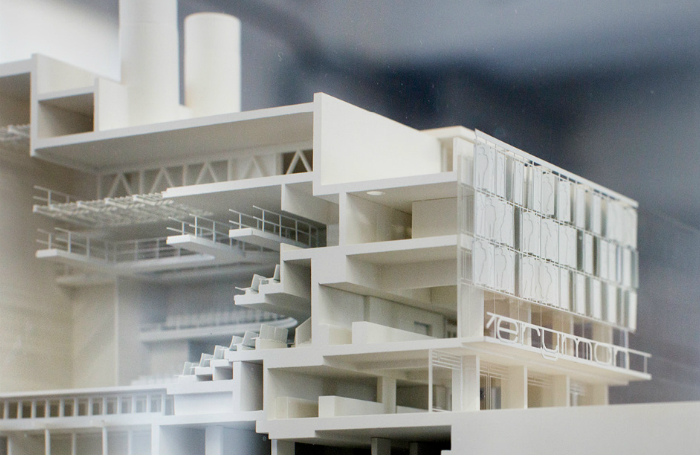There is no professional requirement for an architect to offer VAT projections for a project, but at 20% VAT is a significant cost that cannot be ignored or passed over. Give the wrong VAT advice, however, and a professional liability could be created that would not be covered by PI.
Discussing VAT presents something of a dilemma for the architect, says VAT consultant Simon Merry. While the contractor is ultimately responsible for charging VAT where it is due and collecting it, it is the architect who sits down and discusses project costs with the client at the outset. As part of due diligence, they would be expected at the least to make the client aware of when 20% VAT needs to be factored in. Therefore, the principles need to be understood.
Clients have sued architects for leading them to believe a project is new build for VAT purposes when it was clearly not, warns Merry.
The basic divide is that new build residential projects – and charitable ones, as long as they do not generate any income - do not attract VAT, whereas refurbishment and repair works do. But the rules are not entirely straightforward.
Materials and build costs to shell and core are safely VAT free, after which costs may have to be apportioned to identify where VAT will be charged. There is a misconception that ‘fitted items’ are allowable. Furniture and bespoke joinery (even if a significant part of the design) are non-qualifying and will attract VAT, whereas kitchen furniture may be zero rated. Again, basic building services will be eligible, whereas appliances and audio visual items will not.

New build schemes require two tests, says Merry: the demolition test (has the existing structure been demolished) and then what elements of the new project are eligible for relief. Zero VAT rating is not a presumptive right or indeed blanket rate.
Architects also need to be aware that reduced VAT rates of 5% apply to certain types of work, such as bringing empty properties back into use, converting offices into homes, sub-dividing homes into flats and amalgamating dwellings within a house – it is the change in the number of dwellings that counts, not whether there are more or fewer dwellings.
Professional fees are never lower rated when a consultant is working directly for the client, but when the consultant is employed by the contractor, fees become part of the contractor’s ‘preliminary costs’ and are charged at the same VAT rate as the build, a client saving sometimes not appreciated when the pros and cons of a Design and Build arrangement are being weighed.
All small practices need to be aware that extension and enlargement of an existing property is not VAT free, however new looking and extensive the project may be.
‘New build generally requires full demolition of the property down to the ground floor slab prior to rebuild commencing. If any of the structure is retained or incorporated into the new structure it is probably not new build. There are certain allowable exceptions such as the retention of a façade, but only where it can clearly be shown to be a condition of planning,’ explains Merry.
It is the responsibility of the contractor to apportion his costs into ‘plus VAT’ or ‘zero/5% VAT’. If there is no apportionment then the default 20% VAT has to be levied. There is no prescribed method for this schedule, but it must be formal and at the very least a fair and reasonable reflection of the scheme.
Merry’s advice to architects faced with the need to give some sort of outline VAT guidance to a client is to use a free VAT Helpline, such as the one offered by his own consultancy Berthold Bauer. This service can provide simple answers as to whether a scheme does or does not qualify for VAT reductions.
HMRC also offers a free VAT helpline and publishes detailed guidance on VAT for construction work. Merry says the quality of official advice has improved dramatically and now includes HMRC’s own internal guidance.
Giving specific or detailed advice on VAT costs should be avoided, advises Merry, to eliminate any risk of the advice being flawed. It is better and safer to indicate a potential for relief whilst advising the client to seek their own specialist VAT advice – in this manner the architect has guided the client in the right direction without becoming embroiled in the legalities of providing tax advice.
Simon Merry of Berthold Bauer VAT Consultants will be presenting a new RIBA CPD seminar on ‘Value Added Tax: Presumptions and Preconceptions’ at the RIBA on 28 February 2018.
Thanks to Simon Merry, Managing Director, Berthold Bauer VAT Consultants Ltd.
Text by Neal Morris, © RIBA. This is a Professional Feature edited by the RIBA Practice team. Send us your feedback and ideas.
As part of the flexible RIBA CPD programme, Professional Features count as microlearning. See further information on the updated RIBA CPD Core Curriculum and on fulfilling your CPD requirements as an RIBA Chartered Member.
Posted on 15 February 2018.









